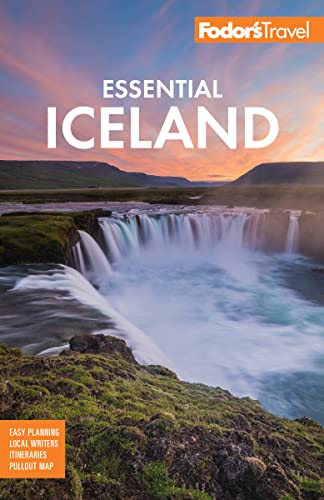Car Travel
The Ring Road, which generally hugs the coastline, runs for 1,332 km (827 miles) around Iceland. Although most of the road is paved, a stretch across the Möðrudalsöræfi highlands and stretches in the east are still gravel. Much of Iceland's secondary road system is unpaved. Take great care on these roads, as driving on a loose-gravel surface takes some getting used to and is not for the timid motorist. Be careful of livestock that may stray onto roadways.
Caution pays off when driving in Iceland's interior, too. The terrain can be treacherous, and many roads can be traversed only in four-wheel-drive vehicles; always drive in the company of at least one other car. Unbridged rivers that must be forded constitute a real hazard and should never be crossed without the advice of an experienced Iceland highland driver. Most mountain roads are closed by snow in winter and do not open again until mid-June or early July, when the road surface has dried out after the spring thaw. Most car-rental agencies won't insure you for river crossings.
Use extra caution when approaching single-lane bridges or blind hills (blindhæð). Before driving any distance in rural Iceland, be sure to pick up the brochure Driving in Iceland from any tourist information center, if your rental agency hasn't already given you one. It has informative tips and advice about driving the country's back roads.
Emergency Services
The general emergency number, available 24 hours throughout Iceland, is 112.
Gasoline
Gas prices are high, about ISK 215 to ISK 225 per liter (¼ gallon) depending on octane rating. Service stations are spaced no more than half a day's drive apart, on both main roads and most side roads. Service stations are usually open daily until at least 10 pm; the cheaper, unmanned ÓB stations are open later and have multilingual credit-card machines. For information on the availability of gas off the beaten track, call Vegagerð Ríkisins (Public Roads Administration).
Contacts
Vegagerð Ríkisins. Borgartún 5–7, Reykjavík, Capital Region, IS-105. 1777; 522–1000; www.vegagerdin.is.
Road Maps
It is essential to have a good map when traveling in rural Iceland. Don't be fooled into thinking all site names on some maps are active settlements. Many of these sites (Icelanders call them Örnefni) are landmarks or farm sites, and some have been abandoned. They may have historic significance, but in general lack service stations or food stores. Consult the Icelandic Public Roads Administration website (www.vegagerdin.is)for up-to-date information, images, and text concerning road conditions.
Rules of the Road
Traffic outside Reykjavík is generally light, but roads have only one lane going in each direction; stay within the speed limit: 90 kph (55 mph) in rural areas on the Ring Road, 80 kph (50 mph) on secondary open roads, and 50 kph (30 mph) in urban areas; the slower speed limits also apply near schools or in denser neighborhoods. Drivers are required by law to use headlights at all times. Seat belts are required for the driver and all passengers; child seats are mandatory.
Car Rentals
Renting a car in Iceland is relatively expensive in the summertime; it may well be worth arranging a car in advance over the Internet or through your travel agent, who may be able to offer a better deal. A typical price for a compact car with basic insurance during the summer months is around ISK 15,600 per day, with 100 km (62 miles) free, plus about ISK 50 per km, or about ISK 33,000 for a compact with unlimited mileage and all insurance. A four-wheel-drive vehicle for rougher roads will cost about ISK 30,000 per day, with Collision Damage Waiver (CDW) and 100 km (62 miles) included, plus ISK 100 per km. There are many car-rental agencies in Iceland, so it is worth shopping around for the best buy. If you plan to explore the interior, make sure you rent a four-wheel-drive vehicle. As elsewhere in Europe, many car-rental agencies provide cars with standard transmission unless you specify automatic (which shouldn't cost extra).
Avis, Budget, and Hertz operate offices in the Leifur Eiríksson Terminal at Keflavík Airport. Hasso and Saga are competitive car-rental options, but require an advance reservation.
Contacts
Budget. Vatnsmyrarvegur 10, Reykjavík, 101. 562–6060; www.budget.is.
Hasso Car Rental. Smiðjuvegur 34, Hafnarfjörður, Capital Region, IS-200. 555–3330; www.hasso.is.
Hertz. Keflavík Airport, Reykjavík, 522–4420.
Red Car Rental. BSÍ Bus Terminal , Reykjavík, IS-101. 519–9300; www.redcar.is.
Saga Car Rental. Keflavík Airport, Blikavollur 3, Reykjanesbær, Southern Peninsula. 515–7110; www.sagacarrental.is.




